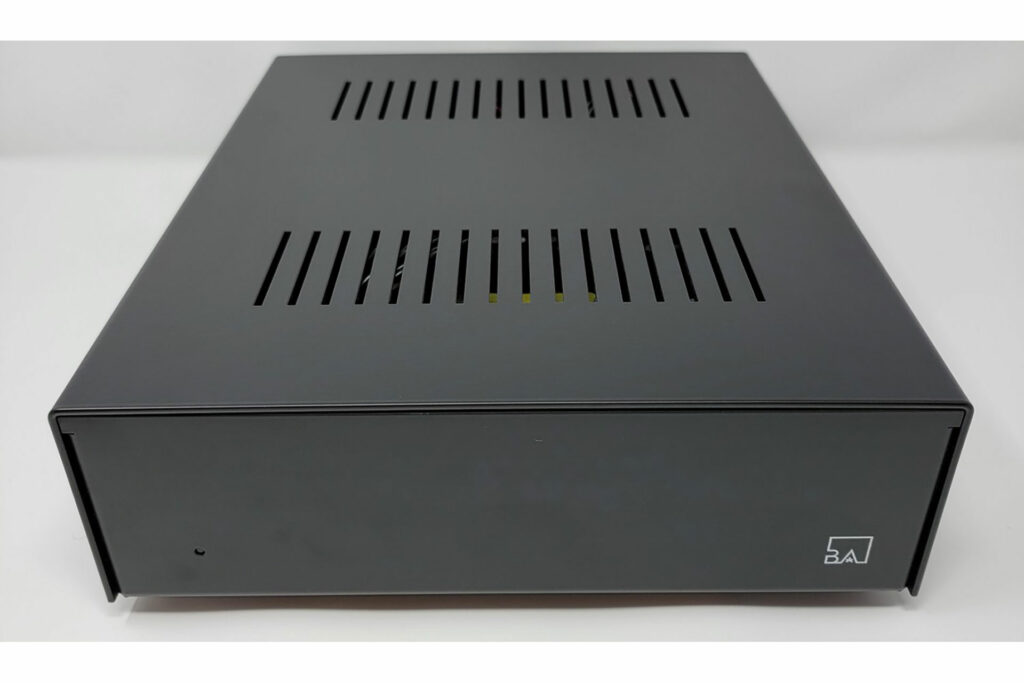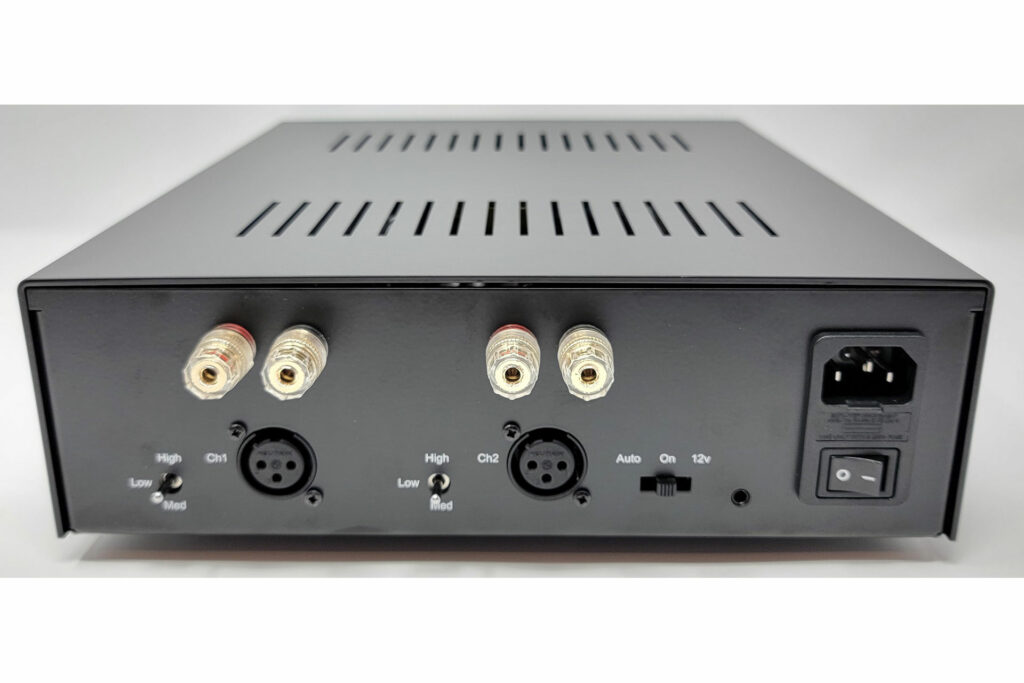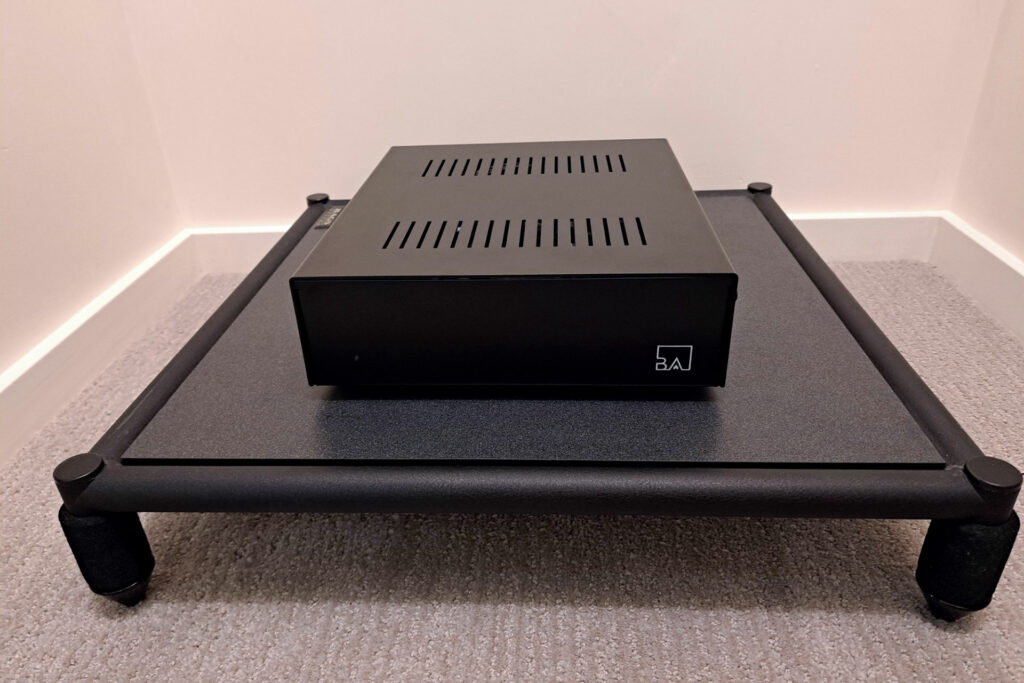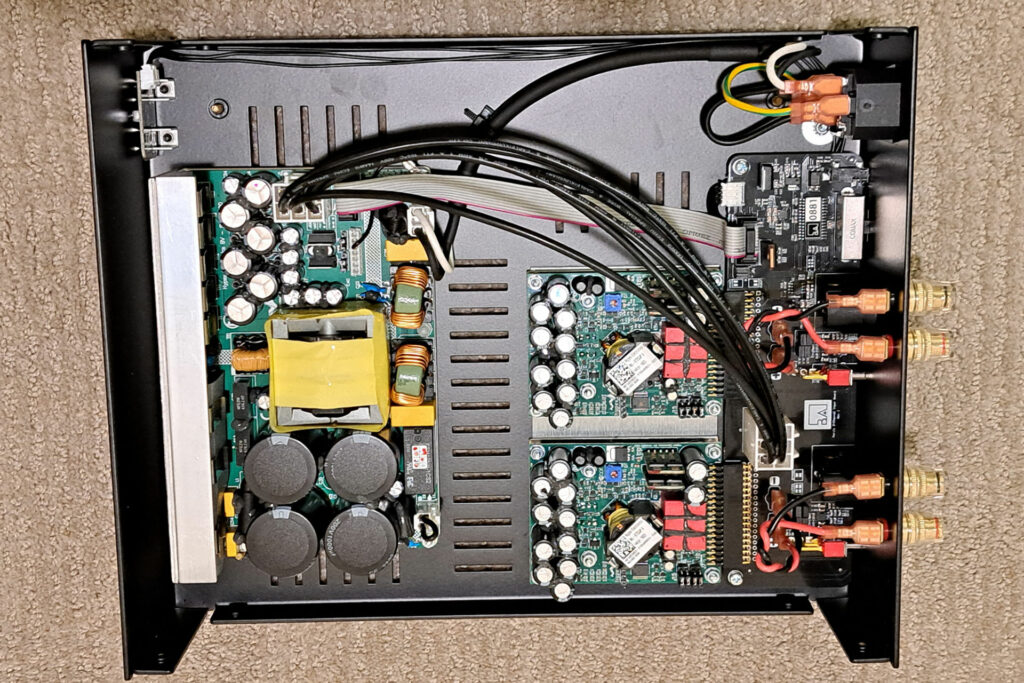If you’re not a modern-day oligarch audio, times may seem uncertain, money a little tight. But if you’re also an audiophile, you still have your system hopes and aspirations. Your dream might be to own an audiophile power amp that will make your ears quite happy or perhaps make your audiophile pals jealous. That starts with a power amp with plenty of clean power, great dynamics, and imaging. You will want bass that grabs you, clean treble, and no audible hums or buzzes of any kind between tracks. But you’re wondering: how much will that piece of audio heaven set you back? Will it take six figures for an exotic amp from overseas? Could your Visa Card take on the $80,000 monoblocks you’ve read about in the audiophile print magazines? Coming back to Earth, could you pay $7,495 for an amp and still afford a vacation with your lover? Or could you – possibly – spend only $1,095 for an amplifier with enviable sound?

This review is about the last option: the Buckeye Amps Hypex NCx500, which is yet another disruptive class-D amp. Nearly 400 watts of audiophile power that won’t likely empty your checking account like that Swiss amp will. Could the promise of class-A-like performance and huge power for pennies on the dollar be true? Read on.
What Makes the Buckeye Amps Hypex NCx500 Stereo Amplifier Special?
- It’s based on Hypex’s new NCx500 Class D amplification module, rated at 380 watts peak into eight ohms, total harmonic distortion plus noise of 0.0006 percent, signal-to-noise ratio of 137 decibels, and a reported frequency response up to 75 kHz. That is gobs of power for even the most demanding audio systems, with the other specs looking so outrageous that, not many years ago, they were simply unattainable.
- The NCx500 is light (eight pounds) and efficient, with stated idle draw of only five to seven watts. Plus, the amp barely gets warm and it doesn’t use a cooling fan, despite its compact size (10 × 12 × 3.5 inches). Fan-free operation is a must for anyone – like me – who has a quiet environment and listens to music with soft passages.
- It includes selectable gain settings, which lets you minimize any potential noise by picking the lowest gain you need. This is especially valuable for those with high-efficiency bookshelf speakers or a stereo preamp or digital audiophile streamer with high output level.
- The Hypex NCx500 doesn’t color the sound. The amp provides well-controlled power, not any audible flavor of its own.
Why Should You Care About the Hypex NCx500 Stereo Amplifier?
Buckeye Amps is a maker of mono, stereo, and multi-channel amplifiers based on Class-D modules from two leading suppliers: Hypex and PuriFi. You may not have heard of those companies, but leading manufacturers such as Marantz, NAD, and T+A use their technology in audiophile products. These new modules have sound that many listeners compare to Class A – but Class A amplifiers typically are costly, heavy, and radiate large amounts of heat.
In Europe, Australia, and the U.S., small, upstart audiophile electronics companies are putting together great-sounding, affordable amps using the new Hypex and PuriFi modules. Buckeye is one of a few such makers right here in the good old U.S.A.
The Hypex NCx500 is a significant product for several reasons. It lets an audiophile just getting into the hobby actually afford excellent sounding power. It’s small enough to work in a desktop system but powerful enough to realistically power up the biggest, most expensive and hardest-to-drive floorstanding loudspeakers on the market today. On hot days, it won’t stress your HVAC system and every day you will be mindful of the small amount of energy this amplifier draws from the wall.

Some Things You Might Not Like About the Buckeye Amps Hypex NCx500 Stereo Amplifier
- It offers only balanced (XLR) inputs. To feed it from a preamp or DAC with only single-ended (RCA) outputs, you’ll need inexpensive adapter cables.
- The power switch is on the rear panel, which is less convenient than a front-panel button.However, the amp has both a 12-volt trigger socket and auto on/off sensing, so you don’t need to reach for that power switch if you don’t really want to.
- The amp carries no electrical-safety mark. Many components these days carry a CE mark, meaning the product conforms to European health, safety, and environmental standards. (Conformance is determined by the manufacturer, not by an inspection body.) In response to my inquiry, Buckeye proprietor, Dylan Launder, emailed that “our amps have been internally torn down by reviewers and critiqued by professionals in electrical design/implementation over the years that we know our products are safe and not a risk.” I opened the amp myself and I was pleased to see that the AC wiring support was securely screwed to the chassis, rather than being fastened with glue, which can fail with age.
- There’s no eye candy here in terms of the industrial design. You don’t pay for frills or fancy metalwork and you don’t get an inch-thick front panel, steampunk design aesthetic, or hernia-inducing weight. Instead, the Buckeye amp uses a simple aluminum case. Audiophiles who listen with their eyes may not fully appreciate this amp, but those who listen with their ears first definitely will.
- Not every audiophile likes a neutral sound. This amp can reproduce depth – if it’s on the recording. It can produce natural string sound and vocals – if they’re on the recording. Likewise – unlike products that add a little zhuzh to everything – it will show you just what a recording offers in imaging and timbre reproduction. I want my power amp to be neutral, so each recording sounds like its own self, not a prettied-up version. The alternative might seem better at first, but in my experience, it becomes boring, because everything starts to sound the same. Those are my tastes. Yours might be different.
Listening to the Buckeye Amps Hypex NCx500 Stereo Amplifier…
I used the NCx500 without the four SVS subwoofers that are usually in my system, so that I could hear the amp over the full audible spectrum. No matter how loudly I played, I never lit the amp’s clipping light. Honestly, I don’t think that I even came close and I had this amp rocking crazy-loud volumes for some of my listening tests.
On “Voy” from Nella’s album of the same name, Nella’s voice sounded naturally lovely, even seductive. The Buckeye amp gave the percussion a sound that made each instrument clear, clean, and distinctive, without any of the fuzziness or sibilance that can be added by a lesser amp. The track’s ample bass was solid. Listening to this young artist in such excellent sound, I understood why the album earned Nella the Best New Artist Award at the 2019 Latin Grammys.
The Boudleaux Bryant song “Love Hurts,” first recorded by the Everly Brothers, has been covered by many others since. I’ve been enjoying guitarist Julian Lage’s instrumental version on his album, Love Hurts. Through the Buckeye amp, Lage’s distinctive playing and tone came through in full detail, and I was captivated by Dave King’s flexible drumming and Jorge Roder’s bass. From bass to cymbals, each instrument had great timbre and occupied its own spot on the stage.
Does the Buckeye Amps Hypex NCx500 Stereo Amplifier Have Any Resale Value?
Buckeye Amps offers great value, and I found a long list of used Buckeye amps online marked “Sold.” So yes, I think the amp will have resale value, if perhaps not as much as an amp from a larger manufacturer with wider distribution. You aren’t getting the brand recognition of, say, Mark Levinson, Krell, Audio Research, or McIntosh, but you aren’t getting the same high asking prices either, so this amp doesn’t have much room to go down in price because its asking price is so amazingly reasonable, which is another factor in its likely solid long-term value.

Who Is the Competition for the Buckeye Amps Hypex NCx500 Stereo Amplifier?
Near the same price point as the Buckeye is the Marantz MM7025 ($999 – buy at Crutchfield), a Class AB amp that outputs 140 watts into 8 ohms. If you are OK with its pretty quiet cooling fan and lower power output, you may want to take a listen. Marantz makes some fantastic audiophile electronics today at very fair prices.
The NAD C 268 ($999 buy at Crutchfield) uses an older Hypex module and outputs 80 watts. You get the NAD name and legacy but a lot less power for your audiophile dollar. I have to say, I owned a NAD integrated amp that used the same module, and I found the sound a just a bit flat compared to the Buckeye amp at close to the same price.
A very similar unit to the Buckeye is the Apollon Hypex NCx500 ST NCOREx Stereo Amplifier, available online from Slovenia for €1,099 (converted to $1,156.84 at time of writing). With specs and components similar to the Buckeye amp, the Apollon adds a front-panel power switch but lacks the Buckeye’s clipping indicator. Adding overseas provenance to this new world of amps might be a little scary for some, but this one looks to be a really cool option.
The NuPrime STA-9X ($1,249) uses NuPrime’s own Class-D technology and puts out 130 watts into 8 ohms. It has both balanced and single-ended inputs but lacks selectable gain settings. I’ve not had a chance to listen to this one.
Another player in this exciting world of Class-D amps is Orchard Audio. Their Starkrimson Duo for $1,349 is a GaN or Gallium Nitride amp that other reviewers on staff have been raving about for its low heat, small size, and Class-A-like sound. Much like the Buckeye products, the Orchard Audio products are pretty plain-Jane looking, but they don’t sound like that. Michael Zisserson has the monoblock version of these amps in for review now and he’s liking them as much as the $5,700 AGD Productions Tempo di Gan amp he recently reviewed.

Final Thoughts on the Buckeye Amps Hypex NCx500 Stereo Amplifier
Before choosing my current reference amps, I auditioned half a dozen or more Class AB amplifiers at MSRPs up to $10,000. Sonically, I felt the $3,000 Class D amps I chose were pretty much in the same league as the others and I liked their sound just a little better. I also found them easier on my wallet, my back, and my cooling bill. The Buckeye amp reviewed here sounds similar to my reference amps, which is a fine accomplishment at the price. In my listening, I found the Hypex NCx500 to have clean, extended high frequency reproduction, a natural sounding midrange, rock solid bass, and pinpoint imaging. Like the best Class D amps I’ve heard, the Buckeye also has a relaxing clarity that presents lyrics and melodic lines remarkably distinctly. The Buckeye amp maintained that clarity when music got loud and complex.
With its hefty power output and ability to drive truly punishing two-ohm loads, the Buckeye amp should mate well with almost any audiophile speaker out there. Before you spend a lot more on a power amp, or a little less on an amp that might not sound as good, you would be wise to listen to the Buckeye Amps Hypex NCx500.




Dear MIke (author of this review), you are wrond about XLR and RCA converson. For good sound reproduction you need sofisticated hi-fi grade converter from RCA to XLR, its not that simple to convert by cable – its more complicated that you think. Please revie you statemend and corect the review. Thanks, Arthur
WOW on the grammar here. Mike is the one with the pHD. He can comment additionally.
Sorry for spelling and grammar, english is not my mother tongue 🙁 Reg my comment lets wait for Mike comment. Thanks
Arth, Thanks for your opinion. The manufacturer (Buckeye) says: “An RCA to XLR cable is all that is needed to connect an RCA source to the XLR inputs on all of our amplifiers. Using an RCA to XLR cable will not degrade the audio signal/quality.” If wired correctly, this will just reduce S/N slightly compared to a truly balanced connection. Since the S/N ratio of this product is so high, it still will be below the threshold of audibility.
As to other converters, a studio-grade transformer is great option, but far more expensive. It can prevent ground loops.
Many audiophiles have favorite cable brands, and I stay out of that fray. In my opinion (and experience), good Mogami, Canare, or Belden cable with Amphenol, Switchcraft, or Neutrik connectors are a great place to start — and to wind up.
The so called “pin 1 problem.”
Most RCA to XLR adapters and pre-made cables will short pins 1 and 3, instead of utilizing a parallel RC network (e.g., 0.1uF, 100Ω) in series between the RCA collar and XLR pin 3 to help maintain the balanced input common mode current and impedance.
Another option with an RCA (upstream) to XLR (downstream) balanced cable would be to connect the shield and inverted leg (-) to the RCA collar then wire accordingly:
• RCA center pin wire (+) to XLR pin 2 (+)
• RCA collar inverted wire (-) to XLR pin 3 (-)
• RCA collar shield connection “telescopes” to the XLR but does not connect.
If there is hum, then insert the RC network.
The above opens up what could be a lengthy discussion about “true” balanced circuits via differential inputs, symmetrical topologies, and floating inputs.
If the amp has balanced inputs, then balanced connections throughout the system will produce a better outcome.
Wow, you’ve come a long way, baby. I’ve had the good fortune to follow these techologies during my 50 year career. Starting with Sir Clive Sinclair’s switching amp kits in the 60s. To telecom work on sigma-delta conversion in the 70s. To audio A/D, D/A & SACD conversion in the 80s. Bruno Putzeys at Hypex keeps hitting it out of the park. When/if GaN becomes cost effective he’ll reach even greater heights (10KW concert PAs with 99% efficiency?). Exciting times!
Indeed!
Put it up against any class A Pass labs amp and tell me about sound quality – if I can’t clip 120 W class A at four ohms sliding into AB, why would I need a clipping indicator on a 360 W class D? 360W is a lot unless you’re trying to power your fridge. Let’s be real here.